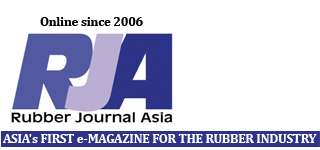According to the Intelligence Market Report of the ANRPC (Association of Natural Rubber Producing Countries) for 1 July-15 July, latex prices in the Kuala Lumpur local market fell 5.7% between 30 June and 15 July because of, among a number of factors, the Enhanced Movement Control Order (EMCO) being enforced in the Klang Valley region as part of the Covid-19 containment measures. The EMCO has disrupted the operations of the country’s dominant rubber glove manufacturing factories which are largely concentrated in the region, ANRPC stated.
The operations in the factories owned by the major players such as Top Glove Corp, Hartalega Holdings, Kossan Rubber Industries, Supermax Corp, Mah Sing Group Even, and several other companies have been either temporarily stopped; or operations have been substantially scaled down, according to reports.
But then, prior to the implementation of the EMCO starting from 3 July, NR latex consumption of Malaysia’s glove manufacturing sector has been on a decline, ANRPC explained. For example, the quantity of NR latex consumed in glove manufacturing in May was down 6.2% at 32,573 tonnes compared to April 2021. The consumption of latex in Malaysia should have fallen further in June and more seriously in the first half of July.
Related: Challenging yet favourable outlook seen for Southeast Asia’s NR sector
There have been new manufacturing facilities that are established outside Malaysia and capacity addition of existing plants in those countries, ANRPC said, commenting how the temporary closure of the glove manufacturing plants in Malaysia and the increasing presence of glove manufacturers outside of the country have altered the global market landscape for gloves. In other words, the geographical redistribution of the global glove manufacturing capacity has a bearing on the demand for NR latex in Malaysia, ANRPC said.
On a related note, the demand for NR from the Southeast Asia is expected to remain weak in the short-term amid rising Covid-19 cases and poor inoculation progress. The temporary closure of several glove manufacturing factories both in Malaysia and Thailand, and the scaled-down operations, will have a negative bearing on the demand for NR latex from Malaysia and Thailand, ANRPC said.
ANRPC also reported that the developments in the physical market of RSS have influenced the RSS3 futures traded on the Osaka Exchange. The physical prices of RSS3 in the Bangkok tumbled 8.3% between 30 June and 15 July. The softening demand for NR latex from the Malaysian glove manufacturing industry has presumably put pressure on the farmers’ societies in Thailand to sell the produce in the form of RSS.
The quantity of NR latex consumed in the Malaysian glove manufacturing came down by 6.2% to 32,573 tonnes in May 2021 compared to April 2021. The consumption should have fallen further in June due to the temporary closure of several plants. Nearly 90% of the latex consumed in Malaysia is sourced by imports, predominantly from Thailand. As a result, both the latex and RSS markets in Thailand heavily depend on the developments in the Malaysian glove manufacturing industry.
ANRPC forecasts that NR prices are expected to gain strength in the short-term supported by the anticipated improved demand from China, the country representing a 43 % share in the global consumption of NR. Additionally, the improved demand anticipated from India, the US and Europe can also augment the recovery in the global demand for NR.

